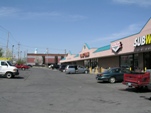As a teenager, working for my dad summers and weekends, I remember wooden ladders being the norm. There were no aluminum ladders that telescoped, extended or flexed at angles to morph into scaffolds. When I was a little older, still working with my tools, air compressors and nail guns changed the paradigm that was used for labor in the field. Not literally in a “field” like a cotton field, but working on a jobsite as opposed to working in an office. When I was a older still, working as a project manager, the fax machine and computers changed that paradigm for office labor, especially estimating and scheduling. In the late 80’s and early 90’s we didn’t use Flir infrared cameras or Surveymaster moisture detectors for building inspections like we do now. Those tools have changed inspection paradigms.
My question is…have these tools changed service for the better?
As with any and all technology, I think that they have the ability to increase efficiency, but that better service ain’t automatic unless someone uses that increased efficiency to benefit customers or clients.
Lowered labor costs, more thorough inspections, and faster project turn-arounds can certainly represent increased service to clients. But, they can also represent more money for providers if not shared.
An economist could probably generate a complex mathematical formula with several variables to produce a chart of the cost for buying and implementing new technology in relation to the perceived customer benefits producing an increase in business volume less a constant for what competitors would be willing to cede to stay in the game, netting a dollar-certain benefit.
Common sense, however, tells me that those who give good service with old technology will be the same ones that give good service with the new stuff.


